Unity is strength. . . when there is teamwork and collaboration, wonderful things can be achieved.
Mattie Stepanek, American poet
I have a cousin who is my opposite in every sense of the word.
Where he enjoys dancing, I enjoy a relaxing few hours with a good book. While he is energized from the rough adventure of water sports — I prefer the leisure of picking olives with my family during the summer.
It’s always been this way between us.
My mother likes to say that he’s the wild, untamed one; while I am the more centered and reflective cousin.
Still, we shared one interest in common while growing up: our love of building things from scratch. As kids we spent hours with our Legos scrawled across the floor. And then later as teens, we transitioned to assembling model car kits in the basement.
I never outgrew this love of building, nor forgot the bonding it offered me and my cousin. So, when I became a programmer and then CEO of my company Jotform many years later, I held onto this vision — that collaborating on a shared project creates connection.
Now, with the “no-code” movement making its way into the mainstream, I see more opportunity for more people from diverse backgrounds to work together seamlessly.
First, what this movement is all about
Many no-code tools have been around for a long time, but have only now started to gain traction on a larger scale.
But in its simplest terms, no-code software are platforms that allow anyone to create anything from websites to mobile apps — without writing a single line of code. Products like Webflow, Bubble, and Squarespace all fit within this category, because they make it easy for people with zero programming skills to use them.
As Ryan Hoover explains for Medium “These tools are reducing the amount of time and coding expertise required to translate an idea into something people can use,” he writes. “You no longer need to become a programmer to build things on the internet, empowering a new wave of makers from different backgrounds and perspectives.”
But here’s what you actually need to know about the movement: whether you’re a startup or small business owner — it can directly benefit you and those you work with.
How no-code empowers collaboration
According to Business Insider, the number of people starting their own businesses in the US has surged to a 13-year high.
So, let’s say this is your case: you’ve recently embarked on entrepreneurship because of the pandemic. You’ve put together a small, talented team and have a solid business plan in motion. Yet, there’s one thing throwing you off your game.
Workflow.
You started out your project management with spreadsheets, but now, as you’ve started scaling with clients and working across different time zones, things are starting to get wonky, to say the least. Keeping track of tasks is becoming a hassle; collecting and storing data is also kind of a nightmare with trying to decipher all the color-coded cells.
This is not how you pictured working together.
The above example is why my team and I spent the last three years working on one of our latest no-code tools, Jotform Tables. Our philosophy is that collaborating shouldn’t be a drag. We built Tables for when a spreadsheet isn’t enough for your team — and so that anyone with zero developer skills can collect, organize, and manage data all in one workspace.
Making teamwork effortless and intuitive is what the no-code movement is all about. Other products like Airtable, Trello, Asana, and Basecamp have all been built with this specific purpose in mind.
But project management isn’t the only way no-code empowers collaboration.
Here are three other ways it benefits teamwork.
1. Boost productivity and accelerate your business
When you cut down on hassles, you work at a faster pace. If you’re a group of marketers starting your own boutique agency, no-code allows you to painlessly go from idea to execution. One person can easily set up a high-quality website using Squarespace — a no-code product with user-friendly tools that lets you create in a matter of hours rather than months. Another team-member can work on adding on a newsletter with Substack; while you focus on creating email campaigns using Hubspot.
None of you will need to write a single line of code to do all of this.
So, instead of wasting time watching tutorials or trying to conquer sophisticated tech skills, you can all save energy on higher level work.
2. Gain efficiency and agility
With no-code, you use pre-built drag-and-drop elements, which means entering data becomes more straightforward. You’re also able to speed up tedious processes through automation. For example, our online form builder lets you easily collect payments or customer data. There’s also less room for errors because you aren’t creating a form from scratch (as you would with a spreadsheet).
I’ve noticed, with my own team at Jotform, automating repetitive tasks not only improves the quality of our work, it creates consistent momentum and keeps the ball rolling forward.
3. Create partnerships and explore new opportunities
Innovation arises from ongoing circles of exchange, where information is not just accumulated or stored, but created.
Meg Wheatley, American writer
One of the biggest advantages of the no-code movement is that these platforms can often become the medium where you discover that you’d like to pursue your talents in a joint venture.
Say, for instance, that you and a friend designed an elaborate and visually beautiful poster for an event using a template from Canva. Or maybe you discovered a talent for creating compelling presentations and would like to start your own small business together.
No-code can be that “spark” or starting point of innovation — where people form new alliances and allow themselves to fully explore their partnership potential.
But that initial impulse doesn’t end there. The impact of these tools makes it so that more and more people can be inspired to keep collaborating on ideas and seek out new business opportunities.
No matter your backgrounds — pooling complementary skill sets (as my cousin and I did all those years ago) can help you seamlessly work together on a unifying vision.
That’s the power of no-code.


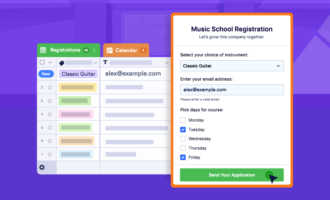







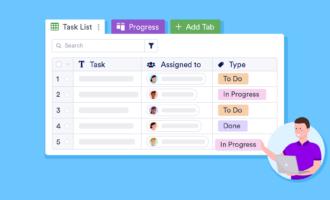








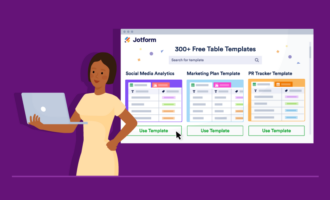












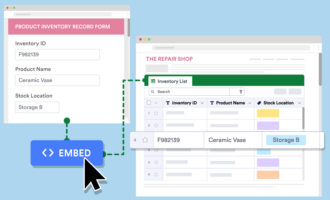
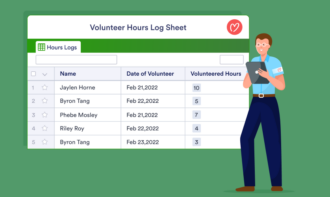













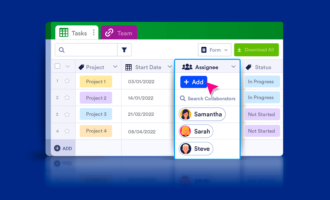

Send Comment: